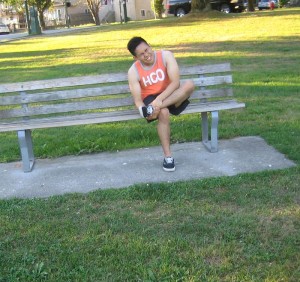A broken foot is a condition involving a fracture to any of the 26 foot bones. The fracture can occur in the toes, heel, ankle or midfoot. A broken foot can occur from various injuries such as accidents, falls or dropping heavy objects on the foot. In addition, osteoporosis which involves thinning and weakening of the bones is an addition cause.
In most cases, the individual knows immediately that he/she has broken the foot. There is a snap or crack along with pain. For severe fractures, the bone might be visible and even protrude through the skin or the foot appears deformed. The symptoms of the injury are localized to the site of the fractures.
What are the indications?

The symptoms of a broken foot are focused on the site of the damage and usually include swelling and pain that likely develop after the fracture occurs. When it comes to the severity, it is based on the extent of damage. The usual indications include the following:
- Burning sensation
- Bleeding or bruising
- Joint pain
- Foot pain and swelling
- Difficulty moving the affected foot, toes or ankles
- Difficulty walking or standing
- Stiffness
- Numbness
- Tenderness
- Tingling or other unusual sensations
Management
The management for a broken foot is started by seeking medical care. The doctor will request an X-ray and perform a physical exam. The X-ray visualizes the foot bones and reveal if a fracture has occurred and its location.
The treatment tends to vary depending on the affected bone, severity and the underlying cause. For minor cases, they can be managed at home with a plan recommended by the doctor. These measures might include the application of ice, pain medications to reduce the swelling and pain as well as limiting activity.
In case a fracture resulted to the misalignment of bone, the doctor should set or reduce it by realigning the bone fragments. In some instances, the setting of the fracture can be done in a clinic but severe cases require surgery. Proper alignment is ensured by using a splint, cast or other device to secure the foot in the right position. The doctor will inform the individual whether weight can be placed on the foot and if there is a need to use crutches while walking.
Quick Note / Disclaimer
The material posted on this page on a broken foot is for learning and educational purposes only. To learn to recognize and manage fractures, register for a first aid and CPR course with Red Deer First Aid.
